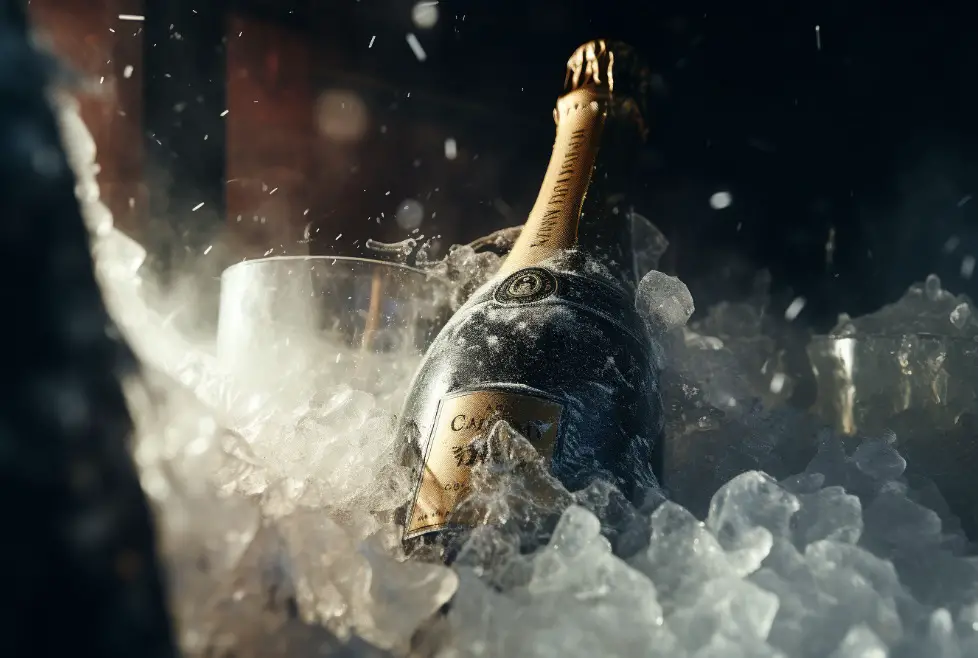Making wine is a time-intensive process that requires at least two months to complete. The fermentation stage takes around two weeks depending on the yeast, temperature and grapes used.
This is followed by an aging period of two to three weeks, which enhances the flavors and aromas of the wine.
The longer the aging process, the better the taste becomes. Essential equipment for home winemaking includes a fermentation vessel, airlock, and siphon. Aging the wine in bottles is crucial for optimal taste, especially for red wines.
The type of seal used on the bottles can affect the aging potential, and the price of the wine can serve as an indicator of its aging potential as well.
Key Takeaways:
- Making wine requires a minimum of 2 months, with fermentation taking at least 2 weeks and aging taking at least 2-3 weeks. But the longer the aging process, the better the taste.
- A fast yeast and yeast nutrients along with modern clarifying agents can give you a finished wine in less than a week if you wish. But it will not be the best quality.
- Proper equipment is essential for home winemaking, including a fermentation vessel, an airlock, and a siphon. Aging wine in bottles over time is crucial for optimal taste.
- Red wines benefit the most from aging, and the type of seal used, alcohol percentage and grape type, acidity and tannin content can affect the aging potential. The price of the wine can sometimes be an indicator of its aging potential.
How Long It Takes To Brew Wine?
As a wine enthusiast, I’ve always been curious about the winemaking process. Specifically, I’ve always wondered how long it takes to brew wine. In this segment, we’ll dive into the details of winemaking and explore the minimum amount of time it takes to make wine, as well as the importance of aging wine for a better taste.

Additionally, we’ll take a look at the equipment needed for home winemaking, so you can be fully prepared to make your own delicious batch of wine. Let’s get to it!
Usual time required from grapes to bottle: at least 2 months
Making wine at home requires a minimum of two months to complete. This is because the fermentation process, which takes approximately two weeks, needs time to complete fully before moving on to the aging process that follows for two to three weeks.
Proper wine storage is necessary since aging in the bottle also enhances the taste.
Below are six steps involved in producing homemade wine:
- Collect all necessary equipment and ingredients for winemaking.
- Sanitize all equipment before use.
- Add warm water and yeast to dissolve sugar during fermentation.
- Transfer the mixture to a secondary fermenter after removing solids, then let this age for a few weeks.
- Bottle wine and store it in cool, dry places away from sunlight and heat.
- Wait for at least two months after starting brewing and savor your homemade wine.
The type of seal used affects the aging potential of wine. For instance, red wines benefit more from corking than screw caps or synthetic corks. Wine stored correctly may improve with time; however, high price tags don’t always correlate with higher quality.
True history reveals that winemaking dates back thousands of years ago when ancient Egyptians soaked grapes in jars until they fermented naturally and resulted in tasty beverages.
Age like a fine wine, because a wine that is properly aged will always leave a better taste in your mouth.
Make “Turbo Wine” in Less Than a Week!
Making your own wine has become much easier and faster. There are kits available that allow you to make wine in just 5 days, while the traditional process could take several months.
The improvement in winemaking is attributed to better raw materials, such as improved grape juice varieties like Cabernet Sauvignon and Chardonnay, and the use of superior yeast and clarifying agents.
In the early 1990s, the concept of quick wines emerged, reducing the production time from three weeks to just nine days. This was achieved by introducing complete yeast nutrition, taking into account all the yeast’s needs during fermentation.
The right balance of nutrients, including trace elements, vitamins, and minerals, played a crucial role in achieving a fast and clean fermentation process.
Qualified microbiologists focused on fast fermentation techniques, leading to the development of turbo yeast and refined methods for producing quick wines.
Using a kit with already extracted juice and a fast yeast strain can get you actual wine in less than a week!
Following the success of nine-day wines, a range of other brands offering even faster fermentation times emerged, including seven-day, five-day, and one-day wine kits.
However, the one-day kits, which essentially involved a flavored mash, were not as popular due to the compromise on taste and quality.
Among the various options available, Cantina’s five-day wine, particularly the Gold series made from special grapes, is considered the best in terms of quality and closeness to commercial wines.
Overall, the advancements in winemaking have made it easier than ever for enthusiasts to create their own wines, with improved results that rival those found in stores.
But aging your wine will always give the best result!
Importance of aging wine for better taste
When it comes to wine, the importance of aging for a better taste cannot be overstated. Aging is a critical part of the winemaking process that allows the flavors and aromas to continue developing over time.

During this time, the harsh tannins in young wine begin to mellow out, providing a smoother finish and increased complexity. Additionally, oxidation occurs during aging, which further changes and refines the taste. The longer wine ages, the more these flavors and aromas will refine.
It’s important to note that different wines have varying aging potential, with red wines typically benefiting more from aging than white wines. The type of seal used on the bottle can also significantly impact aging potential. Moreover, price does not always equate to improved taste or aging potential.
When storing wine for optimal aging conditions, it’s essential to keep it away from sunlight and stored in a cool environment as higher temperatures can affect flavor and integrity. A dedicated wine fridge can provide an alternative option for proper storage.
Through history, various tests demonstrate the importance of aging in improving wine’s quality substantially.
In 1990 Chateau Latour opened their vaults from years back offering numerous bottles dating back from 1863 which were marveled by critics with remarkable tasting notes; undoubtedly emphasizing how good cellaring elevates great wines’ flavors while still retaining structure and freshness over time – demonstrating indeed that good things happen with age when we talk about fine vintages such as Chateau Latour!
Get ready to invest in equipment that will make your kitchen look like a lab, because home winemaking requires some serious gear.
Equipment needed for home winemaking
Home Winemaking Equipment
To make wine at home, specific equipment is required. Here’s a short list:
- Carboy
- Drilled stopper
- Siphoning tubing
- Hydrometer
A carboy serves as the primary fermenter. A drilled stopper allows for the insertion of siphoning tubing and helps keep oxygen out of the wine during fermentation.
Siphoning tubing is used to transfer wine in and out of the carboy without stirring up sediment. A hydrometer measures the sugar content of the wine.
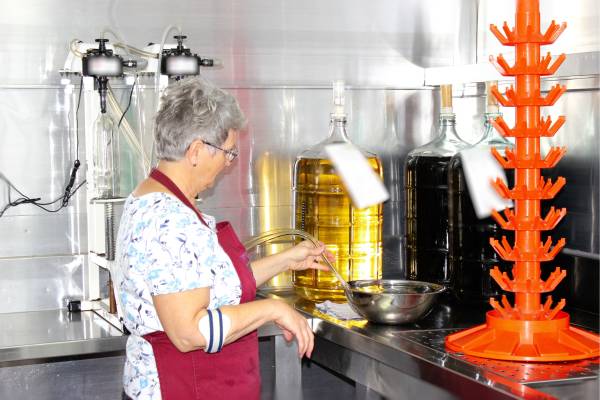
In addition to these essential pieces of equipment, an airlock can be added to prevent oxidation and bacteria growth during fermentation, while a bottle filler makes it easy to fill bottles.
It’s also important to sanitize all equipment before use and store everything properly between uses.
Properly maintained equipment ensures that every batch turns out delicious.
Keep in mind that investing in high-quality gear early on can save money and hassle down the line.
Age is just a number, but for wine, it’s the difference between grape juice and liquid gold.
Fermentation and Aging Process for Wine
As a wine enthusiast, I’m always curious about the different stages involved in wine production. In this part, we’ll take a look at the two significant processes of fermentation and aging involved in winemaking.
One crucial aspect of the fermentation process for wine is that it takes about two weeks, and during this time, yeast is added to the mix. Aging, on the other hand, takes between two to three weeks, and during this time, the wine is moved to the bottle.
The bottle’s significance in aging wine cannot be overstated; it plays a vital role in enhancing the flavor and color of the wine.
Fermentation process takes 2 weeks
During the wine-making process, the period of fermentation takes two weeks. This is a crucial part of the process where yeast converts sugars into alcohol and carbon dioxide. Without fermentation, there can be no wine.
- The first step in fermentation is cleaning and sanitizing your equipment. Keeping everything clean will help prevent unwanted bacteria from ruining your batch.
- The next step is to add the yeast to your must which initiates the alcoholic fermentation process. Ensure that you stir it properly and cover it with an airlock lid for 1-2 weeks.
- After two weeks have passed, check for signs of bubbles indicating fermentation activity or use a hydrometer if necessary. If no bubbles are present, give it more time and check back later before proceeding with aging.
It’s essential to note that during this period, temperature control plays a vital role in achieving desired results since high temperatures speed up fermentation while low temperatures slow it down. Red wines usually benefit more from the aging process than whites since tannins found in red wine can soften with age.
The type of seal used on your wine bottles also affects the potential lifespan; corked bottles offer better aging potential compared to other types of seals such as screw caps or synthetic corks.
Finally, after two weeks of fermentation have passed, set aside an additional two to three weeks for aging before you savour your wine. According to research by Science Daily, “Wine tannins actually bind proteins in your saliva, preventing those proteins from breaking up fat molecules.” Aging wine is like aging people, it takes time and patience but the end result is worth it.
Aging process takes at least 2-3 weeks, but longer is best
The aging process for wine typically lasts around two to three weeks and is a critical step in the winemaking process. During this time, the wine is stored under specific conditions that enable it to develop its unique taste and aroma.
The wine’s complexity increases during this phase as the tannins found in the grape skins react with the oxygen present in the bottle. This reaction leads to a softening of the tannins, which results in a smoother taste and mouthfeel.
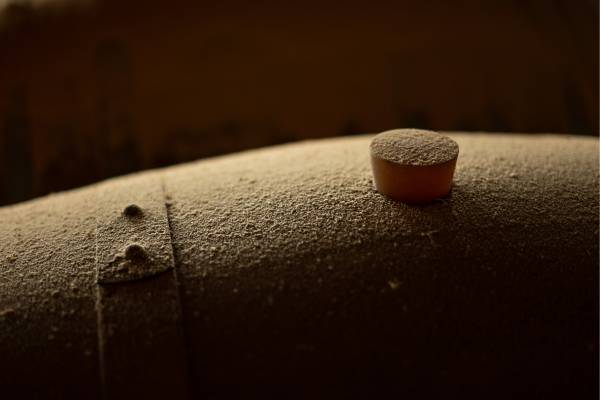
To prepare the wine for aging, it is typically transferred to a glass carboy or oak barrel. Wine barrels are favored among winemakers because they allow for slow exposure to oxygen and impart additional flavors to the wine from the wood itself. Additionally, aging can be done either in-bottle or barrel-aged, depending on personal preference.
In addition to flavor development, aging also affects how long a wine can be stored before it begins to deteriorate. Wines with high levels of acidity or tannins tend to age better than those with lower levels, usually red wines take better advantage of aging than whites ones.
The type of seal used for bottling also plays an essential role; cork stoppers allow small amounts of oxygen into the bottle that contribute to further maturation and maturity.
It is crucial that consumers store their wines correctly after purchase since inadequate storage can cause them to spoil quickly. Exposure to sunlight should be avoided since it accelerates oxidation reactions and temperature fluctuations can lead to spoils quickly as well you can Store your wine at mild temperatures between 7 °C – 18 °C ideally by using refrigeration cabinets built especially for wines named Wine Fridges.
Accordingly, research has shown that cheap wines consume less time for maturing compared with high-quality affordable ones from experts including Wine Spectator magazine.
(Source: ‘1. How Long It Takes To Brew Wine?’)
Aging wine in the bottle is like letting a good joke sit, the longer you wait, the better the punchline.
Significance of aging wine in the bottle
The aging of wine in the bottle plays a crucial role in enhancing the overall quality of the wine. As the wine ages, its chemical reactions continue inside the bottles, and they slowly break down, softening the tannins and producing complex flavors that may be bitter at first but smooth out over time.

Some types of wines can benefit from longer aging periods compared to others, including red wine. When stored properly in a dark and cool place with the appropriate seal, wine’s potential for aging increases significantly, resulting in an exceptional taste unique to aged wines.
It is essential to understand that once bottled, the primary fermentation process slows down significantly or stops altogether. However, other chemical changes continue at a slower pace. The amount of sugar in the wine decreases as the yeast consumes it during fermentation. This results in dryness and improves the complexity of flavors over time due to additional oxidation when stored for more extended periods.
Interestingly, storing or aging wine beyond a certain period does not always guarantee an improved taste profile. Aging potential varies with each type of grape used in winemaking and how well they were fermented and aged before bottling. Another factor affecting aging potential is sealing type, with corked bottles often having better preservation than screw-top bottles.
According to experts from Winemakers Magazine, storing your wine away from direct sunlight is crucial because it may cause premature aging or spoilage due to high temperatures or light exposure. It is also recommended that you store your wine cold (ideally between 50-58°F) and use specific temperature-controlled refrigerators like a Wine Fridge.

It is worth noting that while most homemade wines require two months minimum before consumption, some can take up to even three years for full maturation; this largely depends on factors such as grape variety and fermentation conditions.
(Source: Winemaker Magazine)
Age is just a number, unless you’re talking about wine.
Factors Affecting Aging Potential of Wine
As an avid wine enthusiast, I’ve always been fascinated by the aging potential of different wines. In this section, we’ll look into the factors that affect how long wine can be aged before it reaches its peak flavor.
- One of the interesting findings is that red wines generally benefit more from aging than white wines.
- Additionally, the type of seal used on the bottle can also impact the aging potential of the wine.
- Lastly, we’ll explore the intriguing question of whether the price of the wine affects its aging potential.
Red Wines benefit mostly from aging
Wines that have a higher content of tannins, such as red wines, are better suited for aging. The tannins in these wines act as natural preservatives, and with age, they soften and mellow out, resulting in a smoother taste.
This process is particularly apparent in red wines that are full-bodied or have complex flavor profiles. While white wines can also be aged to some extent, they do not benefit as much from this process as red wines do.
It is important to note that the aging potential of wine varies depending on several factors other than the wine’s color. The type of seal used on the bottle plays a significant role in determining how well the wine will age.
Wines that are sealed with cork tend to mature better over time than those sealed with screw caps or synthetic corks. Additionally, the price of wine can also affect its aging potential; while expensive bottles may be more likely to age well due to their higher quality and craftsmanship, this is not always the case.
One essential factor when storing wine is keeping it away from sunlight and at a cool temperature. High temperatures can cause the wine to age too quickly, leading to spoilage and off flavors. For those who lack proper wine storage conditions but want to preserve their investment, purchasing a wine fridge is an excellent alternative.
Sealing your wine with a cork increases its aging potential, but sealing it with a shoelace probably won’t.
Aging potential affected by the type of seal used
The type of seal used affects the aging potential of wine, and this can differ depending on various factors. One of such factors is the type of closure (cork or screw-cap) used to seal the bottle after its production.
| Sealing Type | Aging Potential |
| Cork | Higher aging potential due to cork’s ability to allow for a very slow oxygen transfer between wine and air in the bottle. |
| Screw-cap | Lower aging potential due to its ability to provide an excellent seal preventing any oxygen transfer between wine and air in the bottle. |
Other factors that are known to play major roles in determining the aging potential of wine include grape variety, vintage, winemaking style, and more. A common belief among wine enthusiasts is that cork plays a crucial role in achieving better taste with age; however, there is ongoing debate about whether this belief applies universally or only under specific conditions.
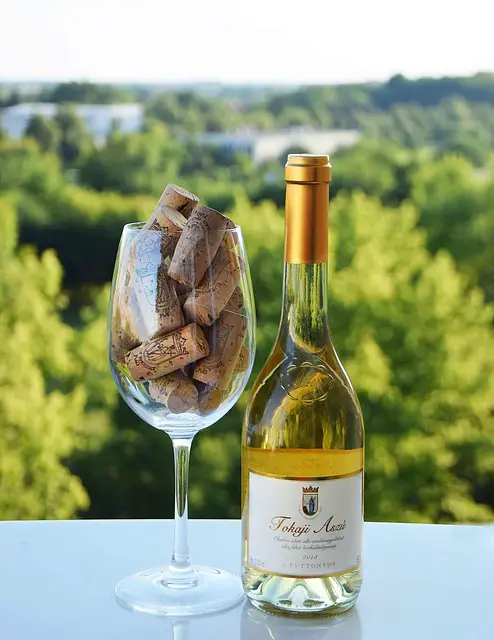
Studies have shown that screw-capped wines can revolutionize expectations around ageing wine, particularly those bottled using high-quality corks prone to contamination by TCA. Still, there remains much research needed on how different sealing practices impact aging potential.
It’s essential to note that all wines don’t necessarily improve with age as they can also deteriorate if not stored correctly.
Avoid storing wines more than five years unless it’s from a premium winery or has been aged correctly under optimal conditions.
Price may not buy happiness, but it can buy better aging potential for your wine.
The role of price in aging potential
The price of wine plays a significant role in its aging potential. Higher prices may indicate that the grape selection, fermentation process, and oak barrels used for aging are of higher quality. This can result in wines with more complexity and depth that can improve with age.
Conversely, lower-priced wines may be made with inferior grapes, have a shorter fermentation period, and use less expensive aging techniques resulting in wines that do not age as well.
In some cases, the price of wine can also impact the perception of its quality and potential for aging. The association between high prices and superior quality can create an expectation that the wine will age well regardless of its actual composition or aging process.
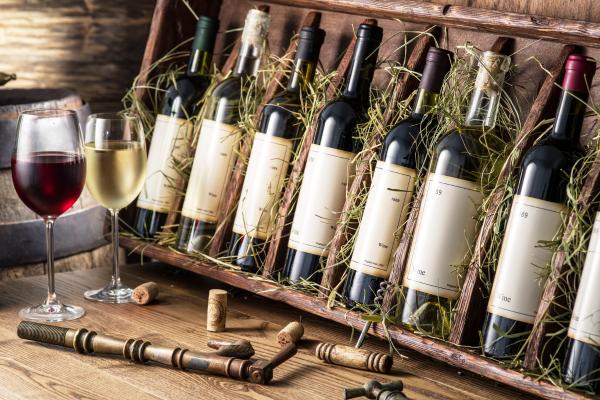
It is important to note that while price can be a factor in aging potential, it is not always an accurate indicator. Wine enthusiasts should pay attention to other factors such as grape variety, region, producer reputation, and tasting notes when selecting wines for long-term aging.
Historically, some winemakers have intentionally increased the price of their wines to create a perception of superior quality and extend their aging potential. In 1976, a wine tasting event known as the Judgment of Paris famously demonstrated this concept when California wines beat out
French rivals in blind tastings despite being significantly less expensive. The event helped establish California’s Napa Valley as a world-renowned wine region and highlighted the impact of perception on wine pricing and aging potential.
Keep your wine away from sunlight, unless you want it to taste like a raisin’s evil twin.
Storing Your Wine
As a wine enthusiast, I’m always curious about the best way to store my wine. Storing wine can be a tricky process that requires attention to detail and an understanding of the factors that can impact its longevity and flavor. In this section, I’ll share some tips on how to properly store your wine.
- First off, it’s important to keep your wine away from sunlight, which can cause it to age prematurely.
- Second, wine needs to be stored cold to maintain its flavor and aroma.
- Lastly, a wine fridge is a great alternative for proper storage if you don’t have a traditional cellar.
Let’s dive into each of these tips and ensure our wine remains at its best.
Keep the wine away from sunlight
Sunlight can damage wine and alter its taste, so it’s important to keep the wine away from direct light. You can store your wine in a cool, dark place like a cupboard or cellar. Light-colored wines are more susceptible to damage from sunlight than red wines.
If exposed to sunlight, the chemicals in the wine break down and cause unpleasant flavors and aromas. UV rays in particular have a significant impact on wine quality, causing premature aging and oxidation. It’s best to keep the wine bottles away from windows or other light sources that emit UV rays.
It’s not just sunlight that can damage your wine; temperature changes and humidity levels are also crucial factors in ensuring optimal storage conditions for your beloved bottles. You should aim to maintain a consistent temperature between 45°F-65°F (7°C-18°C) with a humidity level of 70%.
According to WineFolly.com, “Lightstruck”, a term used in winemaking that refers to the phenomenon where ultraviolet light causes an unpleasant flavor similar to that of cooked cabbage, is something you would want to avoid when storing your precious vintages.
Keep your wine cold, unless you’re going for the ‘room temperature vinegar’ vibe.
Wine needs to be stored cold
When storing wine, a cold temperature is crucial to preserve its taste and quality. Wine needs to be stored in a cool place to avoid deterioration and exposure to heat, which can cause it to spoil quickly.
A cold environment guarantees that the wine will age properly and remain fresh for an extended period. A shelf life of six months or more is achievable if proper storage conditions are met.
An ideal temperature range for storing wine is between 45°F (7°C) and 65°F (18°C). Although any temperature above this range may cause the wine to spoil, too low a temperature might also negatively impact the flavor and aroma of the wine.
Therefore, it’s important to store your wine at a suitable temperature in a cool, dry place that’s free from vibration and excessive light.
It’s worth noting that not all wines require refrigeration as some types are meant to be served at room temperature. Most white wines, sparkling wines, and rose wines should be chilled before serving but kept in a cabinet or cellar when not being used.
According to Wine Spectator Magazine, “Storing your wine appropriately can help maintain its quality over time“.
Therefore, keep your wines out of direct sunlight or any high humidity areas where they may absorb odors from other items nearby. By keeping the cellar suitably cooled, you can enjoy great-tasting wines for years on end without worrying about them going bad!
Why settle for a regular fridge, when you can store your wine in a cooler one?
Wine fridge as an alternative for proper storage
Storing wine properly is crucial to maintaining its flavor and aroma. One alternative for proper storage of wine is a wine fridge. It provides the ideal temperature and humidity conditions for storing wine, including red, white, and sparkling varieties.
In a wine fridge, the temperature remains constant and can be adjusted according to the storage requirements of different types of wine. Humidity levels are also controlled within a wine fridge to prevent corks from drying out or becoming moldy.
Moreover, using a wine fridge as an alternative for proper storage has several benefits:
- it protects your investment by maintaining the quality of the wine you have invested in.
- it allows you to store both premium and everyday wines separately and at their ideal temperatures.
- Finally, many modern models come with features such as UV protection and noise reduction that further enhance your experience.
One essential factor to consider when purchasing a wine fridge is its size and capacity. This will depend on how many bottles you want to store at any given time. Additionally, if you plan to store large format bottles or collect aged wines that require more space than regular-sized bottles.
According to Wine Enthusiast Magazine surveys conducted in 2020, among consumers who own a dedicated storage unit specifically intended for their collection such as a wine fridge (68%), it was indicated that most of them purchased these units primarily based on capacity needs rather than price points.
Fact: Having a dedicated storage unit such as a wine fridge helps preserve your valuable investment by creating optimal conditions during long-term aging; through this preservation process specific flavors and notes of individual grape varietals can be highlighted over time without suffering jeopardizing loss due to faulty storage or environmental changes.–Wine Enthusiast Magazine
Because sometimes you just need a little liquid patience, here’s an easy 10-step guide to making your own wine at home.
Easy Way to Make Wine
As a wine enthusiast, I enjoy experimenting with different flavors and making my own wine at home. Making wine may seem like a daunting process, but with the right ingredients and a little patience, it can be an enjoyable and rewarding experience. In this part of the article, I want to share with you the easy way to make wine in just 10 steps.
First, let’s start by discussing the required ingredients for making wine at home. Then, we’ll dive into the step-by-step guide for making homemade wine. Get ready to impress your friends and family with your own delicious homemade wine.
- Gather the ingredients: To make wine at home, you will need the following ingredients:
- Fruit of your choice (e.g. grapes, berries, apples)
- Sugar
- Yeast
- Campden tablets (to sterilize)
- Water
- Prepare the fruit: Crush the fruit into a pulp and strain out any solids.
- Sanitize equipment: To avoid spoilage, sanitize all equipment with Campden tablets according to the instructions on the package.
- Add sugar and water: In a large pot, add sugar and water to create a simple syrup. Bring to a boil to dissolve the sugar.
- Add the fruit: Pour the simple syrup over the fruit and stir to combine.
- Add the yeast: Sprinkle the yeast over the fruit and stir it in.
- Cover and let it ferment: Cover the mixture with a cloth and let it ferment for 7-10 days, stirring it once a day.
- Strain the mixture: After the fermentation is complete, strain the liquid from the solids using a cheesecloth or a fine mesh strainer.
- Bottle the wine: Pour the liquid into bottles and cork them tightly. Store the bottles in a cool and dark place for at least a month before drinking.
- Enjoy your homemade wine: Open a bottle and enjoy your delicious homemade wine with friends and family!
Required ingredients for making wine at home
To make wine at home, certain ingredients are necessary. These ingredients should be carefully chosen as they affect the quality of the final product. Here is a list of required ingredients for making wine at home:
| Ingredient | Quantity |
| Fruit juice or grapes (depending on the type of wine) | 12 pounds per gallon of wine |
| Sugar | 2-3 cups per gallon of wine (depending on desired sweetness) |
| Yeast | 1 packet per gallon of wine |
| Campden tablets (sulfite) | 1 tablet per gallon of wine (for sterilization purposes) |
It’s important to note that certain types of fruit juice and yeast work better for specific types of wines, so it’s best to research before beginning the winemaking process. Additionally, it’s recommended to use non-chlorinated water during the process and add acid blends and tannins for flavor. To ensure successful fermentation, proper sanitation and temperature control is also crucial during winemaking. One commonly used method by home winemakers is using a primary fermenting vessel followed by racking into a secondary fermenting vessel for aging. This is done to remove any sediment from the bottom. Ultimately, selecting high-quality ingredients will yield a flavorful homemade wine.
Step-by-step guide for making homemade wine
To make your own homemade wine, follow this simple step-by-step guide:
- Gather all the necessary equipment such as a carboy, fermentation lock, and siphon hose.
- Sanitize all equipment and the area where you will be making the wine.
- Combine sugar, fruit juice or grapes, water and yeast in a fermenting container and cover it with cheesecloth to let it breathe.
- Allow for primary fermentation for roughly 7-14 days before transferring into a clean carboy using a siphon hose.
- Put on an airlock and wait for secondary fermentation for another 3-4 weeks.
- Lastly, bottle and age the wine for better taste.
It is essential to note that proper storage of your wine is also vital. Keep it away from sunlight and store it in a cool place or invest in a wine fridge if possible. Red wines benefit mostly from aging; however, education about the seal used is crucial since this can affect aging potential. The pricing of different types of wines can also affect their aging potential.
A true story about trying homemade wine involves someone who followed every step by step instruction to make their first ever red wine but ended up letting it sit too long before drinking it as they assumed more time would enhance it further. When they tasted the tannin-filled concoction finally after three years later – much too old than optimal – they found out that age does not always guarantee better taste when it comes to making homemade wine.
Five Facts About How Long It Takes To Brew Wine:
- ✅ The minimum time taken to make wine at home is 2 months from start to finish until it is drinkable, but some kits offer “turbo wine” in less than a week!
- ✅ The fermentation of wine takes a minimum of 2 weeks and then 2-3 weeks of aging before it is ready to bottle.
- ✅ The longer you let your wine age, the better the taste will be.
- ✅ Generally speaking, red wines benefit mostly from aging, while white wines and rosé wines have a more “set-in-stone” aging process and don’t benefit much from any further aging than necessary.
- ✅ Wines closed with a cork allow some oxygen into the bottle, which can help the wine develop new tastes and mature better over time, compared to screw caps.
FAQs On The Wine Brewing Timeline
How long does it take to make wine at home?
It takes a minimum of 2 months from start to finish until you can drink your homemade wine, but most winemakers advise against drinking it after just 2 months.
How does the fermentation time of wine compare to beer?
The fermentation of wine generally takes a minimum of 2 weeks, and then 2-3 weeks of aging before it’s even ready to bottle, which is longer than beer.
Do all store-bought wines benefit from aging?
No, actually many store-bought wines don’t even get better with age.
Which types of wine benefit the most from aging?
Generally speaking, red wines are the wines that benefit mostly from aging.
Can honey be used as an ingredient in homemade wine making?
Yes, honey can be used as an alternative to sugar as a sweetener in homemade wine making.
What is the recommended temperature for aging wine?
The general guideline is to keep the room or fridge you are using for aging your wines at 55F to 60F.




